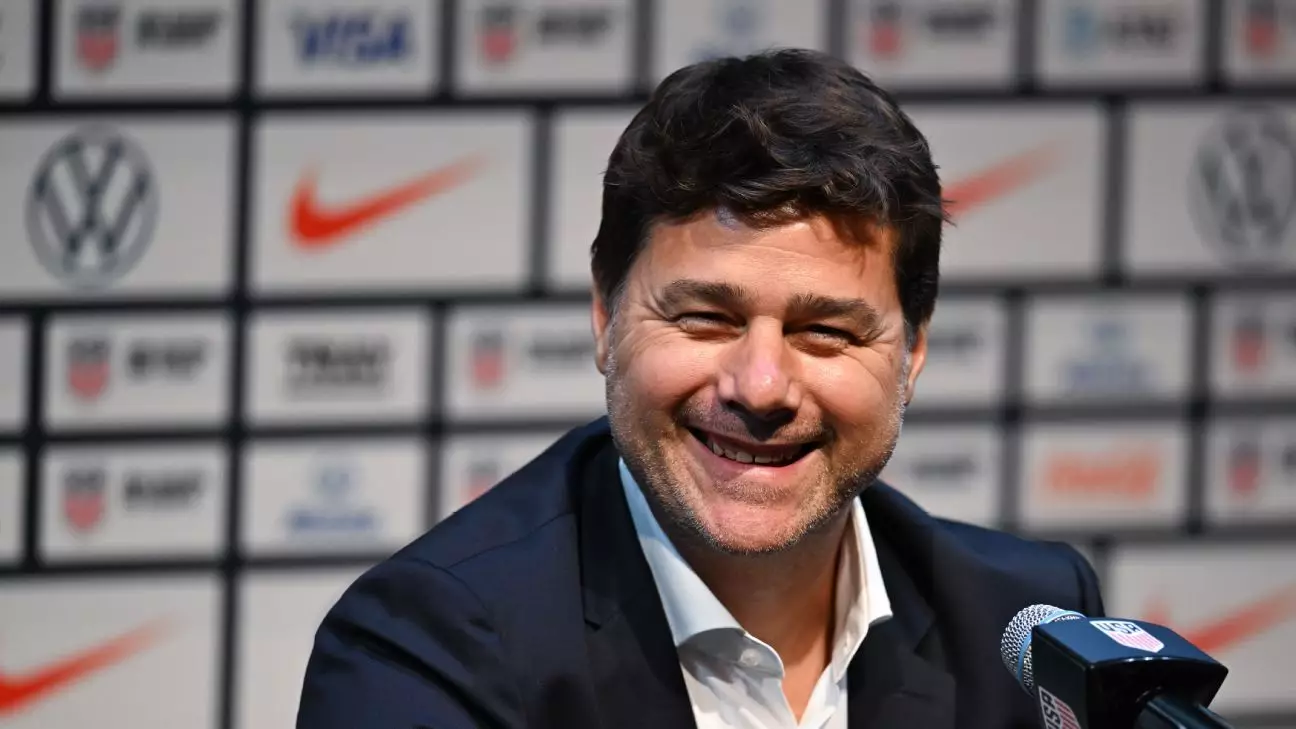The appointment of Mauricio Pochettino as the head coach of the United States Men’s National Team (USMNT) signifies a pivotal moment for soccer in the U.S. According to Chris Richards, a defender for Crystal Palace, this move reflects an earnest ambition within U.S. Soccer to elevate the sport’s status domestically and internationally. Historically, American soccer has often been critiqued for leaning towards safer, more conservative choices in management, favoring local or familiar figures who might not push the boundaries of growth. However, Pochettino’s hiring, an internationally acclaimed manager known for his dynamic coaching style and tactical acumen, represents a bold shift, indicating a serious commitment to improving performance and results on the world stage.
Richards notes that this decision is not merely symbolic but strategic, enhancing the profile of U.S. Soccer as they prepare for the 2026 World Cup. With the tournament set to be jointly hosted by the U.S., Canada, and Mexico, the stakes are notably high, and the expectations surrounding the national team have never been more pronounced. Richards’ comments highlight the duality of aspiration and pragmatism within the landscape of U.S. Soccer, and the willingness to take risks could yield profound benefits for the future of the sport.
As a player on the national team, Richards also addresses an imperative aspect of soccer’s development in the U.S.: increasing accessibility. He emphasizes that while the sport is indeed gaining traction, challenges remain in participation. The “pay to play” model prevalent in youth sports can act as a barrier, particularly for lower-income families. Richards’ perspective is integral to understanding that growth in soccer should not merely be quantitative but qualitative; the goal is to build a more inclusive framework that encourages greater participation across diverse demographics.
For soccer to realize its potential in the U.S., structural changes are necessary. A more equitable system would not only foster talent from underrepresented communities but also deepen the sport’s roots in American culture. Richards articulates a vision where accessibility can act as a catalyst for interest and skill development, transforming soccer into a mainstream sport rather than a niche activity confined to select demographics. This perspective aligns with broader trends observed in sports, where efforts to democratize participation have led to increased success and visibility.
In addition to the team’s coaching evolution, personal stories of resilience also shape the current narrative surrounding U.S. Soccer. Tyler Adams, the captain and midfielder for Bournemouth, is on the verge of making his season debut following a challenging recovery from back surgery. His journey highlights another aspect of the sport’s landscape: the physical demands placed on athletes and how they navigate injuries and come back stronger than ever. Adams’ return is not only a boost for his club but also for the national team as they prepare for upcoming international fixtures.
The reality of injuries underscores the often-overlooked physicality of soccer, which requires both mental and physical fortitude. Adams’ commitment to overcoming adversity speaks to the character of U.S. players today – athletes who are not only looking to compete but to inspire younger generations. As he prepares to join his teammates under Pochettino’s leadership, the synchronization of experienced players’ struggles and triumphs is vital to shaping a unified team ethos.
As the USMNT embarks on a new chapter with Pochettino at the helm, there remains an overarching goal: to win. Richards expresses this ambition succinctly, stating, “I want to win it.” This mentality encapsulates the spirit that is necessary as the team prepares for the World Cup while also navigating the intricacies of international soccer. Winning, however, is contingent upon more than just talent; it requires strategic planning, developmental support, and, perhaps most importantly, a culture that encourages growth and elevates performance.
Looking ahead, it is essential for U.S. Soccer to maintain its trajectory of ambition while ensuring that the roots of this ambition are planted within a diverse, accessible network that allows aspiring players from all walks of life to flourish. Whether through revised funding models or grassroots initiatives, the focus must extend beyond the glitz and glamour of the World Cup to the everyday players who fuel the sport’s future. The combination of top-tier coaching, a positive and inclusive environment, and unwavering ambition can ultimately steer U.S. Soccer toward a landscape where success is not merely a possibility but a likely outcome.

